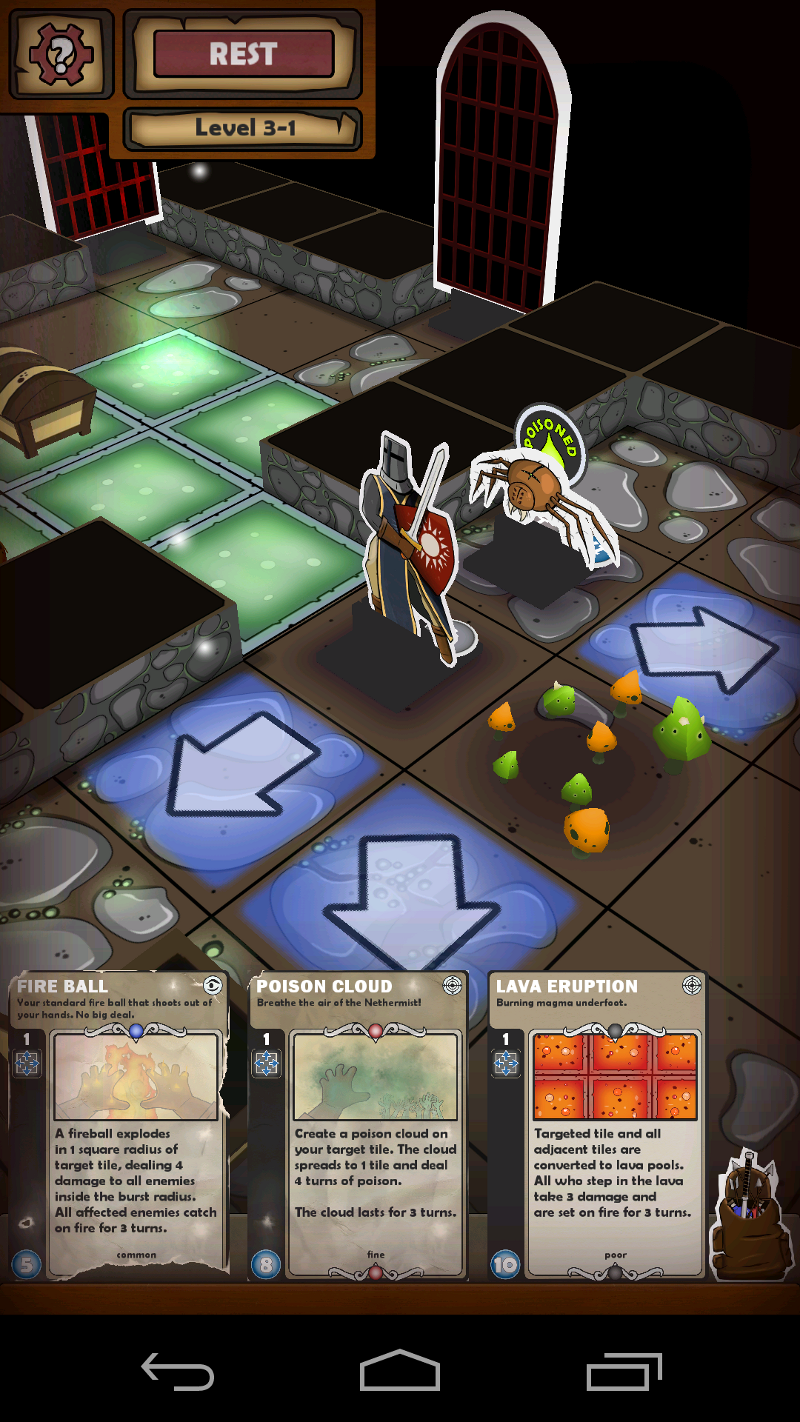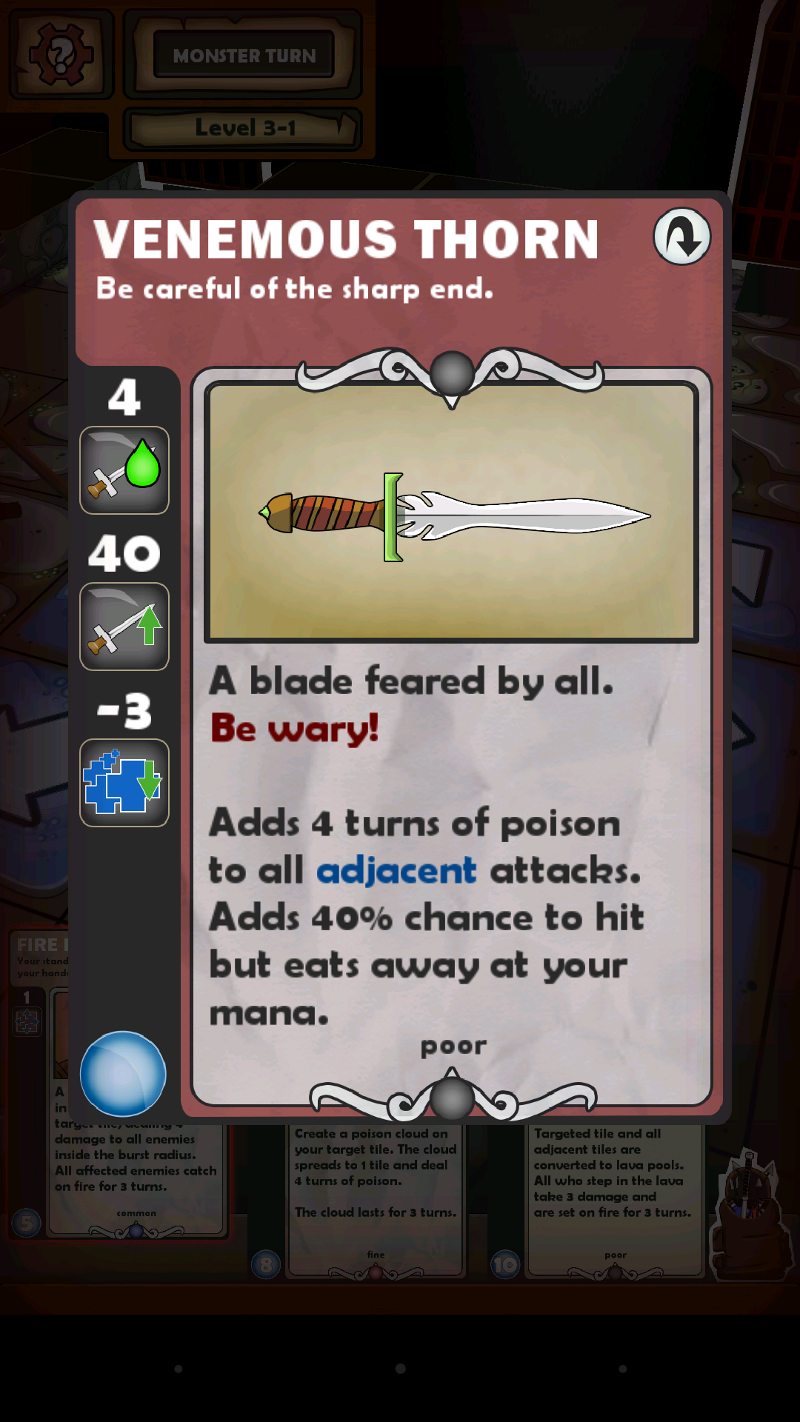Mash-ups, genre-bending and creative anachronism can be a fun way to inject life into a stale idea. Pirates meet ninjas, Victorian engineers find themselves constructing steam dirigibles and aetheric ray guns and zombies somehow find their way into space.
 With Card Dungeon, developer Playtap Games has combined not two clichéd settings, but three different takes on ways to play in the same clichéd setting. Card Dungeon is a curious hybrid of roguelike dungeon quest, tabletop role playing game and card battler. You are The Crusader, a brave knight who seeks to defeat the source of evil oppressing the land. Naturally, this involves hacking your way through randomised dungeons, seeking out loot and magic and clearing the way of deadly enemies.
With Card Dungeon, developer Playtap Games has combined not two clichéd settings, but three different takes on ways to play in the same clichéd setting. Card Dungeon is a curious hybrid of roguelike dungeon quest, tabletop role playing game and card battler. You are The Crusader, a brave knight who seeks to defeat the source of evil oppressing the land. Naturally, this involves hacking your way through randomised dungeons, seeking out loot and magic and clearing the way of deadly enemies.
If you have ever played tabletop D&D or a fantasy boardgame like Talisman or HeroQuest then Card Dungeon will look instantly familiar. The player and his surroundings are shown as tiles and pieces in a 3D boardgame. Both you and your foes are even shown as two-dimensional game pieces. Each is printed on and cut from card and slotted into a little plastic base. The base has indicators that show your Health and Mana (magic fuel) scores as do the bases of enemy figures.
These indicators are 'printed' on only one side of the base, meaning you must rotate the camera around the board and zoom to get the correct angle to actually read them. A cute idea, that mostly works, but can occasionally be annoying.
You are equipped with three random spell cards, each of which conveys an ability such as a fearsomely accurate arrow strike or a cloud of toxic gas. These cards are the only way you can affect your enemies, and as cards gradually fade and become tattered with each use it is important to play them wisely.
 Each turn you may either move around the board one square at a time, or perform an action using one of your cards.
Each turn you may either move around the board one square at a time, or perform an action using one of your cards.
Searching adjacent squares or fallen enemies might reveal a new card with a different spell or vital Health and Mana potions as well as equipment cards that are slotted into your inventory to give certain bonuses. The dilemma is whether to keep any card you find or discard it in favour of your existing hand. You can only carry three spell cards so while you may be loathe to part with your trusty but tattered old Fireball spell in exchange for a fresh but less powerful dagger throw, you don't want to be left with just two other cards when it inevitably rips and goes out of play.
The card juggling aspect of the game works really well and feels both fresh and intuitive. The presentation is excellent and even without a tutorial you can tell as each card gets visibly more tired and faded. Having to ration your spells adds a real sense of strategy to the game and the spells are varied enough with close range and area effect weapons plus an array of protective and healing magic that you will be forced to try many different combinations to find the style of play that works for you.
The old-school boardgame aesthetic largely works then, as does the strategising common to the boardgames Card Dungeon riffs off. But sticking too closely to its dice and card inspiration does cause the game some problems.
Every monster within each room gets a turn of its own and there is no way to skip through them. This means that crowded battles can take place excruciatingly slowly as everyone shuffles through their moves. Just moving around can be a hassle too with every extra creature in range adding to the time it takes to move a single square. The random dungeons also mean backtracking is likely and having to trek back across a wide level one panful tile at a time can become tedious.
As with the positioning of the stat indicators, ploughing ahead with the board game mechanic has left Card Dungeon with rough edges where a more freewheeling approach may have rounded things out in a more satisfactory way. It doesn't make the game unplayable but it is a grain of sand that may chafe over time.
The other major failing is the save system. As a roguelike, Card Dungeon offers you only one life per game. Unfortunately, while the game will save your position at the end of each level, stopping play while in the middle of a dungeon will reset you back to the start of a new, random collection of tiles. For a mobile game likely to be interrupted by the arrival of a bus, an incoming phone call or just a dead battery, this is not smart.
Card Dungeon is fun to play and challenging enough to keep you occupied for quite some time if you can overcome its annoyances. With a little more care and effort put in to the user experience, this has the makings of a classic.
- Card Dungeon is available now on iOS and Android. Published by Playtap Games
- Read other gaming reviews on theartsdesk
- Follow Stuart Houghton on Twitter















Add comment